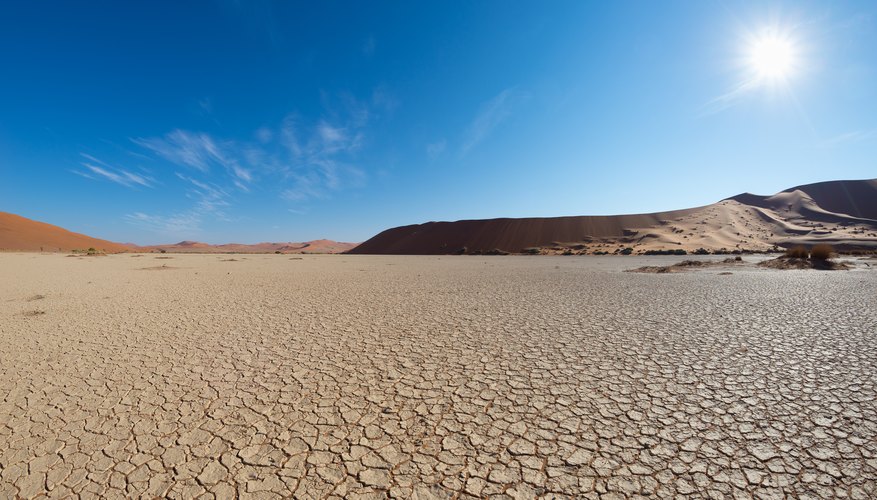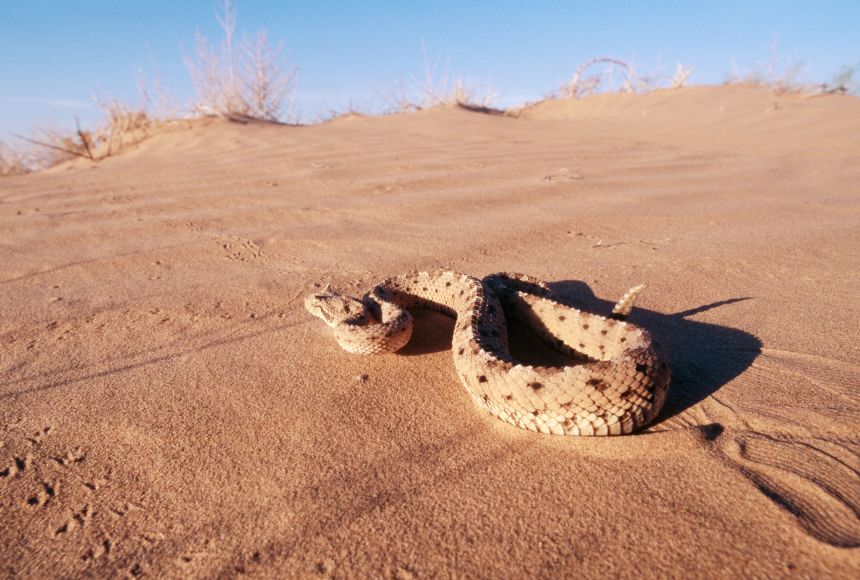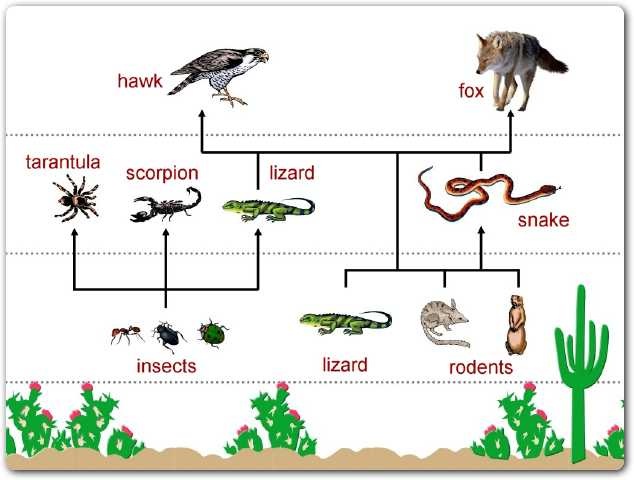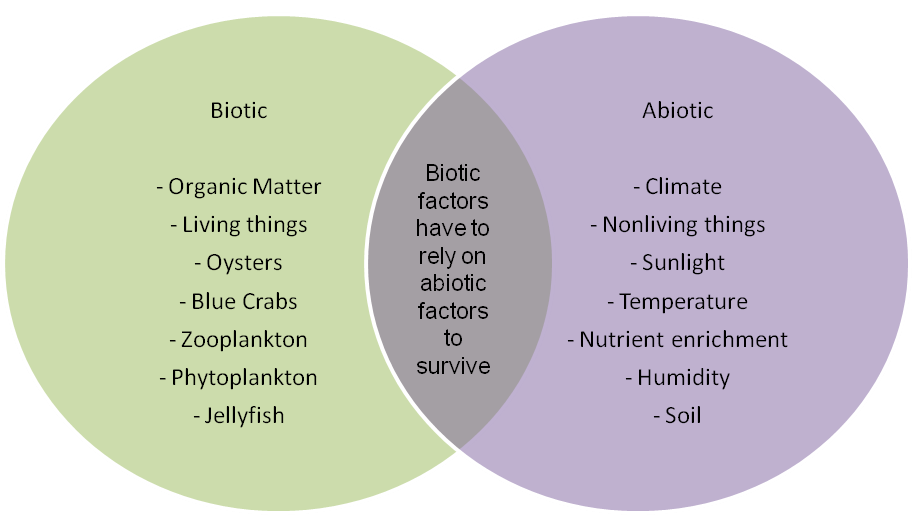Topic abiotic factors of the desert ecosystem: Explore the resilience of life in arid landscapes as we delve into the abiotic factors of the desert ecosystem, revealing the foundational elements that sustain its unique biodiversity.
Table of Content
- What are the abiotic factors of the desert ecosystem?
- Overview of Abiotic Factors in Deserts
- Temperature Variations in Desert Ecosystems
- Precipitation and Water Availability
- Sunlight Intensity and Photoperiod
- Soil Composition and Texture
- Wind Patterns and Their Effects
- YOUTUBE: Desert Ecosystem | Biology Animation
- Atmospheric Humidity and Evaporation Rates
- Geological Features and Landforms
- Impact of Abiotic Factors on Desert Biodiversity
- Adaptation Strategies of Flora and Fauna
- Role of Abiotic Factors in Desertification
- Climate Change and Its Effect on Desert Ecosystems
What are the abiotic factors of the desert ecosystem?
The abiotic factors of the desert ecosystem include:
- Limited Water Availability: Deserts typically have low precipitation, resulting in limited water availability. This scarcity of water is a crucial abiotic factor that shapes the entire desert ecosystem.
- High Temperature: Deserts are known for their extreme heat, with temperatures often exceeding 100°F (38°C) during the day. This intense heat is a significant abiotic factor that influences the organisms\' behavior and adaptations.
- Dry and Sandy Soil: Desert soils are usually sandy and lack sufficient organic matter. This type of soil holds little moisture and makes it challenging for plants to establish root systems. The sandy soil is an abiotic factor that affects the growth and distribution of plant species in the desert.
- Intense Sunlight: Deserts receive abundant sunlight due to their geographic locations and lack of cloud cover. The intense sunlight is an abiotic factor that shapes the desert ecosystem by providing energy and influencing plant photosynthesis rates.
- Low Humidity: Deserts are characterized by low humidity levels, as the dry air quickly absorbs any moisture. This low humidity is an abiotic factor that affects the animals\' ability to retain water and contributes to rapid evaporation.
- Wind: Deserts are often subjected to strong winds that can shape the landscape and influence the distribution of organisms. Wind erosion and sand movement are abiotic factors that impact desert habitats and species.
These abiotic factors collectively create the harsh and challenging conditions found in desert ecosystems, shaping the adaptations and survival strategies of the organisms that inhabit them.
READ MORE:
Overview of Abiotic Factors in Deserts
Deserts are characterized by their extreme conditions, where the survival of life hinges on a delicate balance of abiotic factors. These non-living elements play a pivotal role in shaping the desert ecosystem, influencing the types of plants and animals that can thrive in such a harsh environment. Understanding these factors is key to appreciating the complexity and resilience of desert ecosystems.
- Temperature: Deserts experience dramatic temperature fluctuations, with scorching daytime heat and chilly nights. These variations affect the metabolic rates and behavior of desert inhabitants.
- Light: The high level of sunlight supports photosynthesis in plants, which is crucial for energy production and growth. However, excessive sunlight can also lead to water loss through evaporation.
- Water: Scarce rainfall and low humidity levels make water a critical and limiting abiotic factor. Organisms in the desert have evolved various strategies to conserve or efficiently use water.
- Soil: Desert soils are often sandy, rocky, and nutrient-poor, challenging plant life. Yet, some plants have adapted to these conditions, stabilizing the soil and supporting animal communities.
- Wind: Wind can shape the landscape, erode soil, and affect the distribution of seeds and spores. It also influences evaporation and transpiration rates, impacting water availability.
Together, these abiotic factors define the desert"s unique environment, dictating the distribution, behavior, and adaptation strategies of the organisms that inhabit these stark, yet surprisingly vibrant, landscapes.

Temperature Variations in Desert Ecosystems
The stark landscape of deserts is notably defined by its extreme temperature variations, a hallmark abiotic factor that profoundly influences the ecosystem. Understanding these temperature dynamics is essential for grasping how life adapts to survive under such challenging conditions.
- Daytime Heat: Deserts are renowned for their intense daytime temperatures, often exceeding 100°F (38°C). This extreme heat influences water conservation strategies among flora and fauna and dictates daily activity patterns.
- Nighttime Coolness: Contrary to the daytime, desert nights can be surprisingly cool, with temperatures dropping significantly. This dramatic shift affects how organisms regulate their body temperature and activity cycles.
- Seasonal Fluctuations: Beyond daily variations, desert temperatures also fluctuate seasonally. Some deserts can experience cold winters, where nighttime temperatures may fall below freezing, influencing seasonal behavior and survival strategies of resident species.
- Microclimates: Variations in elevation, ground cover, and plant life can create microclimates within the desert, offering niches with slightly more temperate conditions. These microclimates are crucial for supporting a wider range of life.
These temperature variations not only test the resilience of desert inhabitants but also drive evolutionary adaptations, such as nocturnal lifestyles, burrowing habits, and physiological mechanisms to mitigate heat stress. Through these adaptations, the desert ecosystem thrives, showcasing life"s remarkable capacity to endure and flourish under extreme conditions.
Precipitation and Water Availability
Water, the elixir of life, takes on a heightened significance in the desert ecosystem, where precipitation is infrequent and often unpredictable. The scarcity of water shapes every aspect of desert life, driving adaptations and survival strategies in both plants and animals.
- Low Rainfall: Deserts are defined by their low precipitation levels, receiving less than 10 inches (250 mm) of rain annually. This limited rainfall is a critical factor in the desert"s abiotic environment, influencing the types of vegetation and animal life that can exist.
- Erratic Rain Patterns: When rain does fall, it is often in unpredictable, brief downpours that can cause flash floods. These sudden showers can quickly replenish water sources before evaporating or seeping into the ground.
- Water Storage Strategies: Plants such as cacti have evolved to store water in their tissues, while animals may obtain moisture from food or limit water loss through various physiological adaptations.
- Adaptations to Scarcity: Desert organisms exhibit remarkable adaptations to conserve water, including nocturnal lifestyles to avoid daytime heat, specialized root systems to maximize water uptake, and behavioral adaptations to minimize water loss.
The interplay between precipitation and water availability is a defining characteristic of desert ecosystems. It influences not just the survival strategies of individual species, but the overall structure and function of the ecosystem, showcasing nature"s ingenuity in adapting to extreme conditions.
Sunlight Intensity and Photoperiod
The desert ecosystem is bathed in sunlight, receiving more direct solar radiation than any other terrestrial environment. This abundance of sunlight, coupled with the photoperiod—the length of day and night—plays a crucial role in shaping the life and rhythms of the desert.
- High Sunlight Intensity: The clear skies common in desert regions allow for intense sunlight exposure. This high intensity supports photosynthesis in plants, enabling them to thrive despite harsh conditions.
- Long Days: In many deserts, especially those at higher latitudes, the days can be exceptionally long during certain seasons, providing extended periods for photosynthesis and activity, but also increasing the risk of desiccation and heat stress.
- Variation in Photoperiod: Seasonal variations in day length affect the life cycles of desert organisms, from flowering and reproduction in plants to migration and breeding patterns in animals.
- Adaptations to Sunlight: Desert flora and fauna have developed adaptations to manage the intense sunlight and heat, such as light-reflecting surfaces, reduced leaf areas, and burrowing habits to escape the midday sun.
This relentless sunlight and the photoperiodic changes across seasons are critical abiotic factors that influence not only the survival strategies of desert inhabitants but also the productivity and ecological dynamics of the desert ecosystem as a whole.
Soil Composition and Texture
The soil in desert ecosystems is as unique as the climate, with its composition and texture playing a significant role in supporting the sparse but resilient life that thrives in these arid conditions. Desert soils are characterized by their ability to influence water retention, nutrient availability, and plant root penetration.
- Sandy and Rocky Textures: Many deserts have sandy or rocky soils that allow for quick drainage of water. This rapid drainage can limit water availability for plants, selecting for species that are drought-resistant or have deep root systems.
- Low Organic Matter: Desert soils typically have low levels of organic matter due to the limited vegetation. This scarcity affects the soil"s fertility and its ability to hold moisture, further challenging plant life.
- Salinity: The evaporation of limited water resources can lead to the accumulation of salts in the soil surface, making it difficult for many plants to absorb water and nutrients efficiently.
- Caliche Layers: In some desert areas, calcium carbonate accumulates to form a hard layer known as caliche. This layer can act as a barrier to root growth and water penetration, affecting plant distribution and survival.
Despite these challenges, desert soils support a diverse range of life, from hardy shrubs and cacti to a variety of microorganisms. The adaptation strategies of desert flora to these soil conditions are a testament to the resilience of life in extreme environments.

Wind Patterns and Their Effects
Wind is a powerful abiotic factor in the desert ecosystem, shaping the landscape and influencing the survival strategies of its inhabitants. The effects of wind extend from physical modifications of the terrain to impacting the biological processes of desert flora and fauna.
- Erosion and Landform Shaping: Wind-driven sand and dust can erode rock and soil, sculpting the unique landforms characteristic of desert landscapes, such as dunes and rock formations.
- Seed and Spore Dispersal: Wind aids in the dispersal of seeds and spores, facilitating plant colonization over wide areas. This dispersal mechanism is crucial for the propagation of many desert species.
- Water Loss Acceleration: The wind increases evaporation and transpiration rates, intensifying the challenge of water conservation for both plants and animals. Organisms must adapt to minimize water loss.
- Temperature Regulation: Wind can influence temperature fluctuations within the desert, cooling the air as it moves over the surface or warming it through friction, affecting the microclimates within which desert organisms live.
Despite the challenges posed by wind, desert species have developed remarkable adaptations to utilize or mitigate its effects. These adaptations include wind-resistant plant structures, behaviors that minimize exposure, and the use of wind-sheltered habitats for nesting or resting.
Desert Ecosystem | Biology Animation
Discover the delicate balance of nature in this captivating video about ecosystems. See how plants, animals, and their surroundings interact harmoniously to create a thriving and diverse ecosystem that is essential for our planet\'s well-being. Don\'t miss out on this educational and awe-inspiring journey!
Desert Ecosystem
Take a deep dive into the fascinating world of abiotic factors through this captivating video. Explore the impact of non-living elements such as temperature, water availability, and soil composition on the survival and growth of organisms. Gain a deeper understanding of the intricate dynamics between abiotic factors and living organisms that shape our natural world. Tune in now for an eye-opening experience!
Atmospheric Humidity and Evaporation Rates
The desert"s atmosphere is marked by low humidity and high evaporation rates, conditions that profoundly affect the availability of water and the survival strategies of organisms. These abiotic factors are pivotal in defining the desert ecosystem"s overall water balance and ecological dynamics.
- Low Humidity: The arid climate of deserts is characterized by low atmospheric humidity, which can enhance the sensation of heat and accelerate the loss of moisture from soil and living organisms, challenging their hydration strategies.
- High Evaporation Rates: Coupled with intense sunlight and often high temperatures, the high rate of evaporation quickly removes water from the ecosystem, limiting the periods during which water is available for use by plants and animals.
- Impact on Soil Moisture: These conditions lead to dry soils with low water content, affecting seed germination, plant growth, and the availability of water for animals.
- Adaptations of Flora and Fauna: Desert species have evolved various adaptations to cope with these challenges, such as waxy plant coatings to reduce water loss, deep root systems to access underground moisture, and behavioral adaptations in animals to reduce water needs.
The interplay between atmospheric humidity and evaporation rates is a critical aspect of the desert"s abiotic environment, influencing the distribution, behavior, and physiological adaptations of the ecosystem"s inhabitants.

Geological Features and Landforms
Deserts are not just vast expanses of sand; they are complex environments shaped by a variety of geological features and landforms. These abiotic components contribute significantly to the desert"s unique ecosystem, influencing the distribution of life and the strategies organisms use to survive.
- Sand Dunes: Perhaps the most iconic desert feature, sand dunes are formed by the wind"s movement of sand, creating diverse habitats that support specialized plants and animals.
- Rock Formations: Erosion by wind and water over millennia has sculpted dramatic rock formations, cliffs, and canyons, providing shelter and microhabitats for a variety of desert species.
- Plateaus and Mesas: These flat-topped hills and elevated areas break up the desert landscape, offering different conditions and supporting distinct communities of plants and animals.
- Playas: Dry lake beds, or playas, form in basins where water collects and evaporates, leaving behind salt-crusted surfaces that are inhospitable to most life but can bloom with activity following rare rains.
- Oases: These areas where groundwater reaches the surface provide critical refuges in the desert, supporting lush vegetation and a diversity of life in an otherwise arid landscape.
Together, these geological features and landforms create a mosaic of habitats within the desert, each with its own set of challenges and opportunities for life. Understanding these features is key to appreciating the complexity and adaptability of desert ecosystems.
Impact of Abiotic Factors on Desert Biodiversity
Abiotic factors are the non-living components of an ecosystem that significantly influence the biological diversity and survival mechanisms within desert environments. These factors shape the unique biodiversity of deserts, creating an ecosystem that is both fragile and resilient.
- Influencing Species Distribution: Temperature, water availability, soil type, and sunlight intensity directly impact where and how species can live, leading to specialized adaptations and niche specialization.
- Adaptations to Extreme Conditions: The extreme conditions of deserts drive the evolution of unique adaptations in plants and animals, such as water conservation mechanisms, heat tolerance, and behavioral strategies to avoid climatic extremes.
- Supporting Unique Ecosystems: The combination of abiotic factors in deserts supports ecosystems that are distinct from those in any other habitat, with species that are perfectly adapted to their environment, contributing to global biodiversity.
- Limiting Factors for Life: While abiotic factors enable the existence of life in harsh desert conditions, they also act as limiting factors, controlling the biomass and productivity of the ecosystem.
- Dynamic Equilibrium: The balance between abiotic stressors and biological adaptation is dynamic, with changes in abiotic factors leading to shifts in ecosystem structure and function over time.
The intricate interplay between abiotic factors and biological diversity highlights the resilience and complexity of desert ecosystems. It underscores the importance of these factors in sustaining life in one of the planet"s most challenging environments.

Adaptation Strategies of Flora and Fauna
The harsh conditions of desert ecosystems have led to the evolution of remarkable adaptations in flora and fauna, enabling their survival in extreme temperatures, limited water availability, and nutrient-poor soils. These adaptations are key to the resilience and diversity of desert life.
- Water Conservation in Plants: Desert plants, such as cacti and succulents, store water in their leaves, stems, or roots. Others have deep root systems to tap into groundwater or small leaves to reduce water loss.
- Heat Tolerance: Many desert organisms have developed physiological mechanisms to tolerate high temperatures, including reflective surfaces in plants to deflect sunlight and burrowing habits in animals to escape the heat.
- Nocturnal Lifestyles: To avoid the scorching daytime temperatures, many desert animals are nocturnal, conducting their feeding, hunting, and mating activities during the cooler night hours.
- Camouflage and Defense: Desert flora and fauna often possess colors and shapes that blend into their surroundings, protecting them from predators. Some plants produce toxins or thorns as a defense mechanism.
- Efficient Reproduction: Desert species may have rapid life cycles or the ability to remain dormant during unfavorable conditions, ensuring their genes are passed on to the next generation when conditions improve.
These adaptations illustrate the incredible ingenuity of nature, allowing desert ecosystems to flourish despite the challenges posed by their abiotic environment. The strategies employed by desert flora and fauna underscore the dynamic balance between life and the extreme conditions in which it can thrive.
Role of Abiotic Factors in Desertification
Desertification, the process by which fertile land transforms into desert, is significantly influenced by abiotic factors. Understanding these factors is crucial for managing and mitigating the impact of desertification on ecosystems and human livelihoods.
- Climate Change: Changes in global climate patterns can alter precipitation rates and increase temperatures, exacerbating desertification processes.
- Water Scarcity: Reduced precipitation and increased evaporation rates lead to a decrease in soil moisture, contributing to the degradation of land and its conversion into desert.
- Soil Erosion: Wind and water erosion, accelerated by the lack of vegetation cover and the disturbance of soil surfaces, remove the topsoil, reducing the land"s fertility and its ability to retain water.
- Salinization: The accumulation of salts in the soil surface, a result of high evaporation rates, can render the soil infertile and unsuitable for most plant life, further promoting desertification.
- Human Activities: Overgrazing, deforestation, and unsustainable land use practices can disturb the balance of abiotic factors, leading to soil degradation and increased vulnerability to desertification.
Addressing the role of abiotic factors in desertification requires integrated approaches that consider climate change mitigation, sustainable land management, and the conservation of water resources. By understanding and managing these factors, we can reduce the impact of desertification and protect vulnerable ecosystems and communities.

READ MORE:
Climate Change and Its Effect on Desert Ecosystems
Climate change is having profound effects on desert ecosystems, impacting the delicate balance of life in these arid landscapes. These changes are influencing abiotic and biotic components, with significant consequences for biodiversity, habitat stability, and desertification processes.
- Increased Temperatures: Rising global temperatures can exacerbate the heat extremes already characteristic of deserts, affecting the survival and distribution of species.
- Altered Precipitation Patterns: Changes in rainfall patterns, including both increased droughts and unpredictable heavy rains, challenge the water availability crucial for desert life.
- Shifts in Species Ranges: As conditions change, some species may migrate to new areas where the climate is more suitable, potentially disrupting existing ecosystems.
- Increased Desertification: Climate change can accelerate the process of desertification in areas surrounding deserts, expanding desert landscapes and impacting human communities.
- Impact on Plant Phenology: Altered climate conditions can affect the timing of flowering, seed dispersal, and germination, with cascading effects on food webs and ecosystem services.
The interplay between climate change and desert ecosystems underscores the need for robust conservation strategies and climate action plans. By mitigating the impacts of climate change, we can help preserve these unique ecosystems and the life they support.
Exploring the abiotic factors of desert ecosystems unveils a world of resilience and adaptation, highlighting the intricate balance that sustains life in arid environments and the importance of preserving these unique landscapes for future generations.






